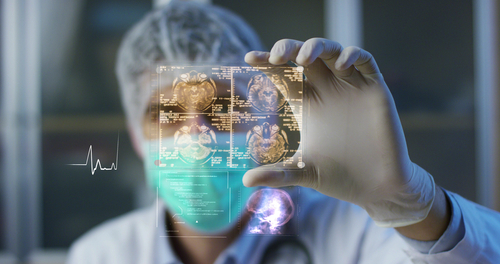Innovative Medical Technologies of 2017: ICMR (Part 1)
M3 India newsdesk Jun 15, 2017
With a view to bring forth healthcare technologies developed across the country and ensure their use for public health benefit, the Indian Council of Medical Research (ICMR), one of the oldest medical research organizations, has been organizing an exhibition of "Innovations in Medical Science and Biotechnology" every year.

Five Hundred and Eleven technologies from various institutes (engineering colleges, universities, medical colleges, institutes and Government Departments, industry and individuals) were received by ICMR. The technologies were screened by a Screening Committee and 40 technologies were shortlisted.
Here, in a two-part series, we review some of the recent, viable technology based solutions in healthcare that have been approved. The selected technologies are in the key health areas including maternal and child health, infectious diseases including tuberculosis and mosquito-borne diseases, non-communicable diseases, disability and safe water and sanitation.
1. Novel dialysis device eases blood detoxification
Dialysis and kidney transplant are considered as the last resort for the patients with end-stage renal disease (ESRD). To overcome the burden of the hectic procedure and certain dietary restrictions, a novel approach of dialysis was introduced. This approach uses a wearable and portable device called mobile continuous ambulatory peritoneal dialysis (mCAPD) system. The experts found that use of mCAPD device increased the quality of life of the patients with ESRD.
The device consists of a micro-peristaltic pump in the front portion which is connected to an electronic control board to control and manage the mCAPD process. It consists of a fluid bag with dialysate fluid, attached to the wearable belt and also to the electronic board. It also consists of other connectors that help operate the device as instructed. This approach is considered as a new dawn in dialysis treatment that improves the quality of life for ESRD patients.
2. A bionic patch mends broken heart
Generally, surgical patches are required for the cardiac surgeries related to congenital heart diseases. Although there are surgical patches of 100 % biological origin, they have limited versatility and are expensive. The novel bionic patch derived from bovine pericardium is found to be effective and life-saving for critical cardiovascular patients. It was found that the Bionic patches do not undergo calcification and do not cause thrombus formation. The bovine pericardial tissue is similar to that of human collagen tissue; therefore, it is unlikely to cause bio-compatibility issues.
3. MIRCaM- A real-time cardiac analyser
With increasing incidence and prevalence of cardiac disease, there is need to develop novel techniques and treatment modalities in the management of cardiac disease. In view of this, experts developed a new device called Mobile Intelligent Remote Cardiac Monitor (MIRCaM), an ambulatory analyser for better cardiac management. MIRCaM is used as a screening device to detect the abnormal functioning of the heart in earlier stages.
This small and light-weight device consists of multiple electrodes to obtain ECG readings. The base unit of the device stores and analyses ECG readings and then detects cardiac conditions. The device is so simple to use that it doesn’t require specialist expertise. The patient is notified by audible alerts which are triggered when an episode is detected.
4. Pediatric perimeter for measuring visual fields
The individuals who undergo perimetry test should avoid moving their eyes during the test. But, analyzing the visual fields in infants may be a challenge as the children move their eyes repeatedly. The pediatric perimeter is a novel device introduced to evaluate the visual fields in babies. The device helps in detecting vision-threatening diseases such as glaucoma and other eye disorders in infants. The design of the device made it comfortable to detect the visual fields in infants.
5. NeoBreathe to save many neonates
Apart from the malnutrition prevailing in most corners of the world, neonatal asphyxia (depriving oxygen condition) is also another contributing factor for the death of neonates. In remote areas where immediate medical help is highly unexpected, a revolutionizing new medical innovation in 2017 is NeoBreathe. NeoBreathe helps in resuscitation which is a foot operating machine helping in artificial breathing for a few minutes. Unlike oxygen cylinders which can be used only in hospitals, NeoBreathe is a user-friendly suction based technology in which the oxygen supply is given by pressing the foot paddle provided, hence, providing the additional benefit of controlling the amount being pumped.
Experts believe that deeper understanding of the science involved in the disease process facilitates innovation of novel diagnostic tools and treatment modalities. Although the pathway involved in the development and introduction of new medical technology is complex, researchers continue to put their efforts to provide quality healthcare.
Reference
-
Innovative Medical Technologies 2017. Available at : http://www.icmr.nic.in/final/ICMR%20Innovation%20Technologies%202017%20final%20pdf.pdf
-
Exclusive Write-ups & Webinars by KOLs
-
Daily Quiz by specialty
-
Paid Market Research Surveys
-
Case discussions, News & Journals' summaries